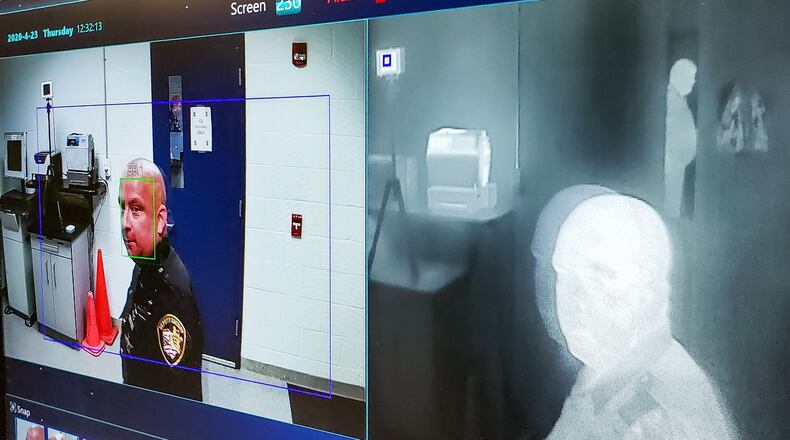When the federal government approved the $2 trillion CARES Act in late March local governments were largely left out of the relief funding. In Ohio, only governments with populations higher than 500,000 — Cuyahoga, Franklin, Hamilton, Montgomery and Summit Counties and the city of Columbus — were eligible. Butler County has about 400,000 residents.
“It’s not confirmed but we are calculating approximately $3 million,” Boyko told the commissioners this week. “It’s 110 to 115 percent of your local government fund distribution, we generally collect about $2.6 million.”
RELATED: Butler County officials starting to officially cut budgets due to coronavirus slowdown
Boyko said the county administrative department has spent about $90,000 in dealing with the coronavirus, such as beefed up cleaning and sanitizing of county buildings, extra IT expenses to allow people to work remotely, installing Plexiglass in certain areas of county-owned buildings and purchasing personnel protective equipment.
The commissioners authorized Boyko to spend up to $100,000 without prior approval at the start of the crisis. This week the commissioners approved $25,000 for temporary hotel housing for homeless residents who must quarantined. Not included in the cost is a request from the health commissioner for $267,000 to help with her budget.
These numbers do not reflect costs the other elected officials have incurred, such as the sheriff. Chief Deputy Anthony Dwyer said the sheriff’s office has spent well over $100,000 on equipment and supplies — like $11,000 for a temperature-taking devise for the jail — for COVID-19, some of which will be reimbursed.
“We’ve spent way more than that for COVID issues, just buying thermometers and you name it, it’s been an interesting three or four months,” said about an $85,000 grant the sheriff applied for recently.
Direct costs associated with the coronavirus are just a fraction of the total economic impact of the pandemic, a $20 million revenue shortfall is estimated, but the $3 million in CARES money will be restricted.
“It’s got to be spent on COVID related expenses like the stuff we’re going at the jail and extra funding we’re forwarding to the health department,” Commissioner Don Dixon told the Journal-News. “It doesn’t help the general fund but it helps relieve the general fund because we were going to pay for it one way or the other.”
Early estimates were the county could lose $20 million from various revenue sources because of stay-at-home orders by the governor when the pandemic struck in mid-March.
The commissioners drained the $12 million budget stabilization fund and agreed to use $1.5 million from a reserve fund to help close the revenue gap. They still needed the others to cut 4.14 percent from the total approved budgets for this year and shave an additional 3.3 percent off the reduced figure for next year.
Sales tax is the largest revenue source for the county general fund. Proceeds for March were $3.4 million, about triple what Boyko projected in her revised financial forecast after the pandemic struck. Officials chalked it up to several factors, including the sequestration didn’t take effect until mid-month and a sales were trending very strong for the year prior to that.
April revenues should be a truer barometer of what’s to come. Finance Director Angel Burton said sales tax distributions should be out Friday, “so our forecasts are unchanged until then.”
Preliminary April general revenue fund tax receipts for the state were $866.5 million or 35.3 percent below estimates.
“We do expect the sales tax to be ugly,” Dixon said. “That’s why for the past six years we’ve been straightening up the financial side of the county’s books. We’re going to be in pretty decent shape.”
Boyko noted there are several other revenue streams that can’t be measured on the monthly basis, like property taxes that come in twice a year, so the true picture isn’t yet clear.
“I’m afraid we’ve putting so much emphasis on where we are in terms of our revenue based on the sales tax which is month-to-month,” Boyko said. “We haven’t even been able to attest the projections for those revenues that come in quarterly, that come in semi-annually.”
About the Author
